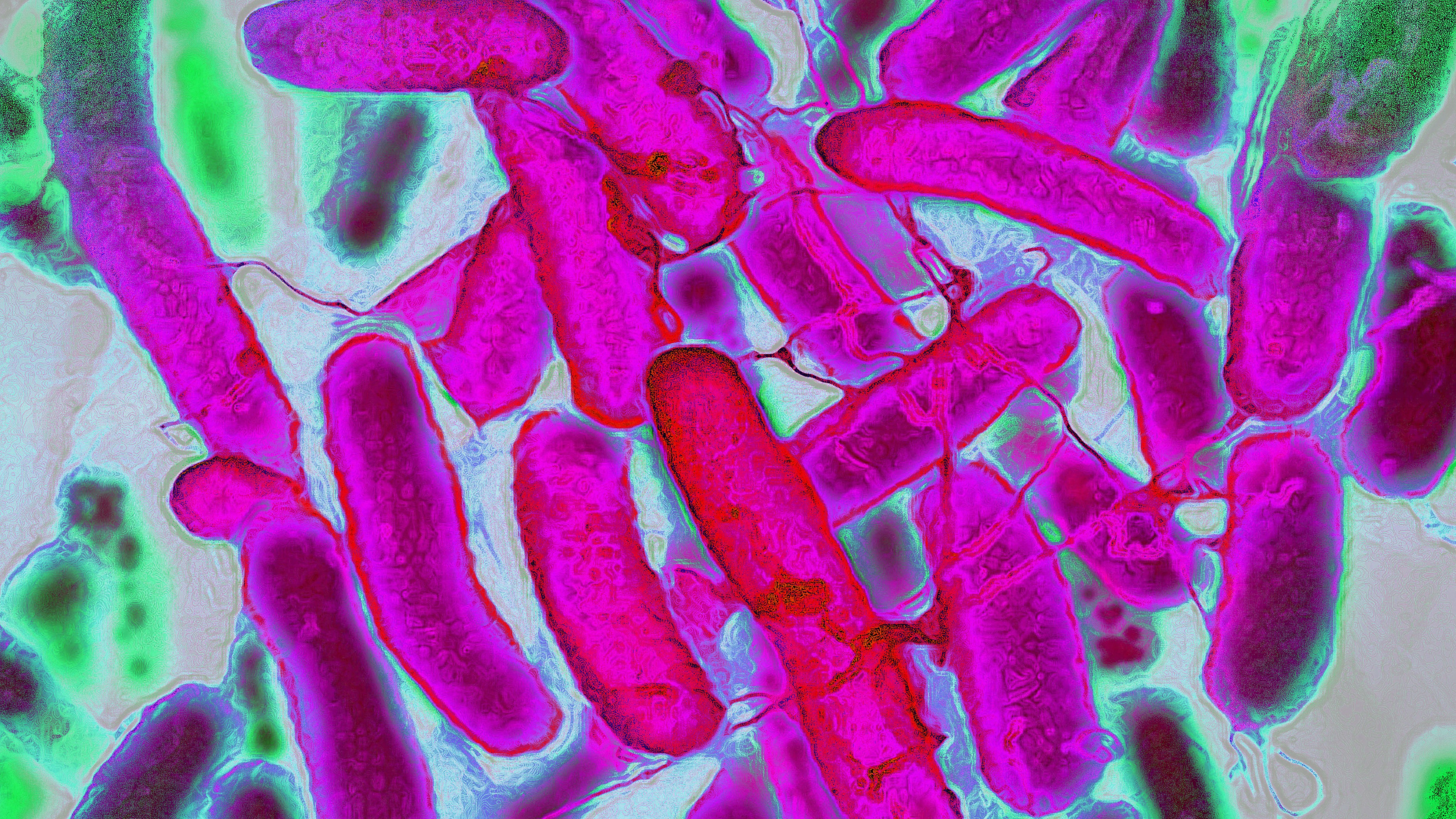Scientists invent way to use E. coli to create and dye rainbow-colored fabric in the lab
Scientists have used a novel method to create sustainable, rainbow-colored fibers using bacteria in the lab.

Scientists have used genetically engineered bacteria to simultaneously create and color fabrics in a one-pot method. Compared with current methods that rely on fossil fuels, the new technique offers a simpler and more sustainable way to produce colored textiles.
In a new study described Nov. 12 in the journal Trends in Biotechnology, the researchers created cellulose-based fabrics spanning the colors of the rainbow by altering the conditions used to grow the bacteria.
Synthetic fibers rely "heavily on chemical synthesis and post-treatment steps that are energy-intensive, laborious, and environmentally harmful," said study lead author Sang Yup Lee, a professor in the Department of Chemical and Biomolecular Engineering at the Korea Advanced Institute of Science and Technology. Such processes can generate large amounts of greenhouse gas emissions and contaminate water and soil with heavy metals and carcinogens, Lee told Live Science in an email.
Therefore, in recent years, there has been a growing trend to use an alternative method of producing natural fibers from the fermentation of bacteria. Cellulose is a promising target, as this material mimics the natural fibers found in fabrics such as cotton. A wide range of bacteria ordinarily convert glucose into fibers of cellulose to lend structural support and defend against other microbes. However, cellulose produced by bacteria is naturally white, which means it often needs to be dyed after processing.
Lee and his team have now simplified this process by growing cellulose-producing bacteria alongside microbes that produce natural colorants. The team used strains of color-producing Escherichia coli (E. coli) to create two classes of dyes: darker violaceins (which produced colors such as purple, blue and green) and warmer carotenoids (which produced colors such as red, orange and yellow).
Initially, the researchers genetically modified the metabolic pathway of a strain of Komagataeibacter xylinus bacteria to increase cellulose production during fermentation. Subsequently adding the violacein-producing E. coli to the reaction vessel resulted in purple-, blue- and green-dyed fabric.

However, the team was not able to use the same method to achieve the warmer tones, because the bacteria did not produce enough dye to stain the cellulose fabric, likely due to poor bacterial growth. To overcome this issue, they added pregrown and treated cellulose to a culture of carotenoid-producing E. coli. This co-culture method successfully led to red-, orange- and yellow-dyed fabrics, thereby completing the team's rainbow palette.
Get the world’s most fascinating discoveries delivered straight to your inbox.
Overall, this method "eliminates the need for separate dying and washing processes," Lee said, adding that this helps to reduce chemical waste and water consumption.
The colored bacterial cellulose showed an overall strong stability against acids, bases, heat treatments, and washing. However, the team noted that further work is needed to fully test these materials — notably, to check their durability against industrial detergents and mechanical wear and tear.
Moving forward, Lee wants to "extend the current seven color platform to a broader spectrum" and scale up the process to an industrial level while maintaining consistent quality. Further altering the way bacteria produce the cellulose could open up other uses of the material, such as biodegradable packaging, he said.

Mason Wakley is a freelance science journalist from the UK, most interested in chemistry, materials and environmental science. He was a 2025 Chemistry World intern. Mason has a masters in chemistry from the University of Oxford.
You must confirm your public display name before commenting
Please logout and then login again, you will then be prompted to enter your display name.
